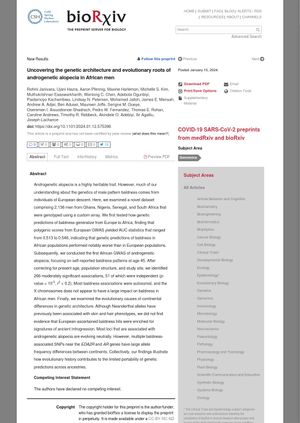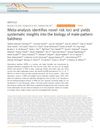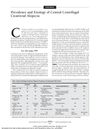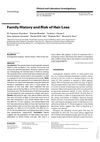Uncovering the Genetic Architecture and Evolutionary Roots of Androgenetic Alopecia in African Men
January 2024
in “
bioRxiv (Cold Spring Harbor Laboratory)
”

TLDR The research found that genetic factors for male pattern baldness in African men differ significantly from those in Europeans.
The study "Uncovering the genetic architecture and evolutionary roots of androgenetic alopecia in African men" examined the genetics of male pattern baldness in 2,136 men from Ghana, Nigeria, Senegal, and South Africa. The researchers found that genetic predictions of baldness based on European data performed worse in African populations, with AUC statistics ranging from 0.513 to 0.546. The first African GWAS of androgenetic alopecia identified 266 moderately significant associations, 51 of which were independent. Most baldness associations were autosomal, and the X chromosome did not have a large impact on baldness in African men. The study found no evidence that European-ascertained baldness hits were enriched for signatures of ancient introgression. However, multiple baldness-associated SNPs near the EDA2R and AR genes showed large allele frequency differences between continents. The findings suggest that evolutionary history contributes to the limited portability of genetic predictions across ancestries.













